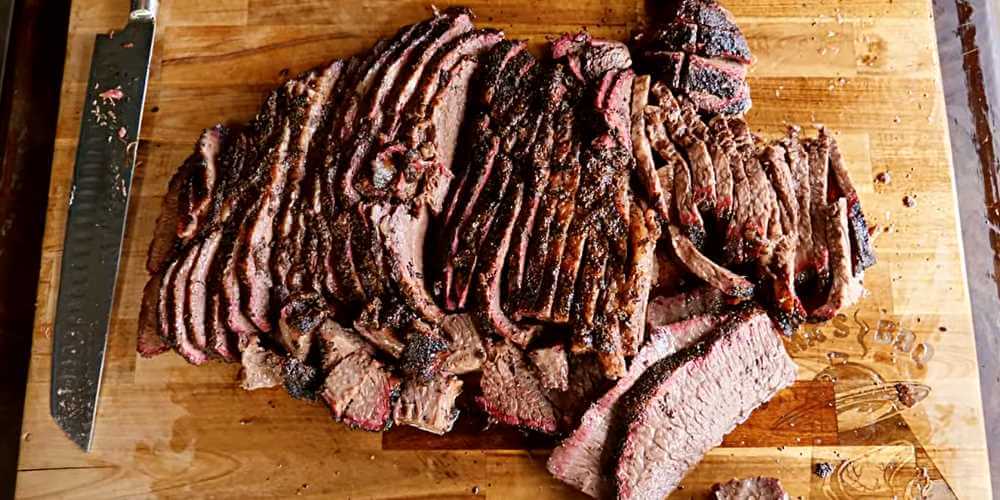
John Andrew
John Andrew, owner of The Meat Inn Place in Lilydale, boasts a legacy of butchery, offering exclusive grass-fed and free-range meats, and specialising in low-and-slow cuts. With a career inspired by his father, John’s passion and expertise have nurtured a reputable business distinguished by unique offerings like Kiwami Wagyu, driven by a commitment to quality and community service.
Is A5 Wagyu Worth the Hype?
Reading Time: 17 minutes and 52 seconds
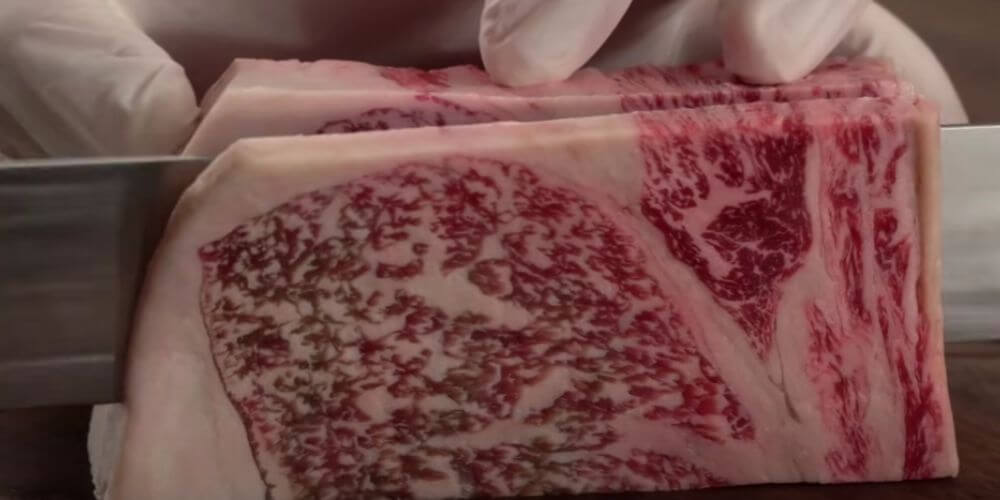
As a proud owner of The Meat Inn Place, located in the heart of Lilydale, I’ve spent a huge chunk of time continuing the legacy that my father passed down to me. A little haven for meat lovers like myself, our butcher shop, has been serving a comprehensive range of grass-fed and free-range meats, specialising in low and slow cuts. Among these, one of the crowd favourites is our A5 Wagyu steak.
I still vividly remember the first time I laid eyes on an A5 Wagyu steak. What instantly caught my eye was its exquisite marbling that resembled A-grade tuna belly sashimi – ruby-hued with streaks of fat layered within the meat. Believe me when I say I’ve probably seen more cuts of meat that you have in your life, and by far, this Wagyu cut has been one of the best I’ve encountered. Life-changing? Maybe. It’s been a journey of discovery, learning, and, above all, taste. Today, I’m here to share not just my story, but also a real down-to-earth verdict on whether A5 Wagyu truly lives up to its immense hype.
Is A5 Wagyu beef really worth it?
As a provider of premium meats in Melbourne, I’ve often pondered and been asked by many customers, “Is an A5 Wagyu steak really worth its premium price?” From my personal and professional experience, the answer leans heavily towards a resounding yes.
The first time I tasted an A5 Wagyu steak was an experience that I couldn’t forget. I hosted a BBQ for my wife’s birthday and we decided it was the perfect occasion to indulge and splurge in a culinary extravagance – a thick and beautifully marbled A5 Wagyu ribeye steak. As I unwrapped the parcel, revealing the ruby-hued meat adorned with an intricate lace of creamy white fat, I couldn’t help but feel a sense of anticipation and curiosity. With a world-renowned steak like this, I felt that it didn’t need any more additional seasoning other than freshly ground pepper and coarse sea salt. Grilled on a hot stone plate with a dollop of butter, I watched as the marbled fat slowly sizzled away, flavouring the steak even more. I prefer my steak medium-rare, but with a steak like this, I think you can even eat it as almost rare! With the first bite, an explosion of rich, buttery flavors enveloped my senses. The texture was sublime – incredibly tender and quite literally melting in my mouth.
Among its ranks, A5 Wagyu beef, the highest grade available, is particularly esteemed for its extraordinary marbling and tenderness. These qualities contribute to a dining experience that is both luxurious and unparalleled, making A5 Wagyu a must-try for enthusiasts of fine food.
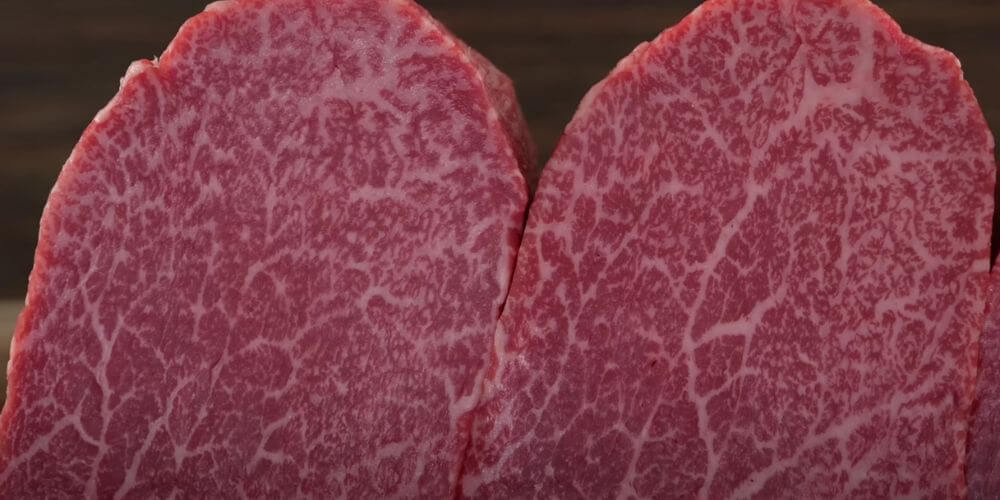
Exploring the Origins of Wagyu Beef
What is Wagyu?
You’ve probably heard the term ‘Wagyu’ so many times, whether it’s on TV, social media, or even in print media like magazines and newspapers. Yes, you got it right! The world has a growing fascination with Wagyu beef, and I’m here to tell you all about it. The world’s interest in Wagyu can be traced back to its origins in Japan, where it has been revered and savoured for many centuries. This premium beef is the result of a rich cultural heritage, meticulous breeding practices, and an unwavering commitment to producing the finest quality meat.
From what we know from the top of our heads, we know that Wagyu is synonymous with culinary luxury, not because of its price but because of its exceptional taste and the story of its cultural heritage beginning in Japan’s green pastures.
What does Wagyu mean in English?
Wagyu is a Japanese term that translates directly to “Japanese Cow.” And this is not just one kind of Japanese cow breed! At first, I thought that there was only one breed of Wagyu, but it turns out the term ‘Wagyu’ encompasses four primary breeds: the Japanese Black, Brown, Polled, and Shorthorn. These Japanese cow breeds are renowned for their amazing marbling, which is one of the reasons why Wagyu has a tenderness, rich flavour, and smooth texture like no other. The secret behind this marbling lies in the high concentration of unsaturated fats, enriching the beef with a taste that’s both luxurious and unparalleled.
In Japan, the art of Wagyu production is a source of immense pride and cultural significance. From the gentle massages and beer-infused diets to the serene environments in which the cattle are raised, every aspect of the process is meticulously designed to produce the highest quality beef.
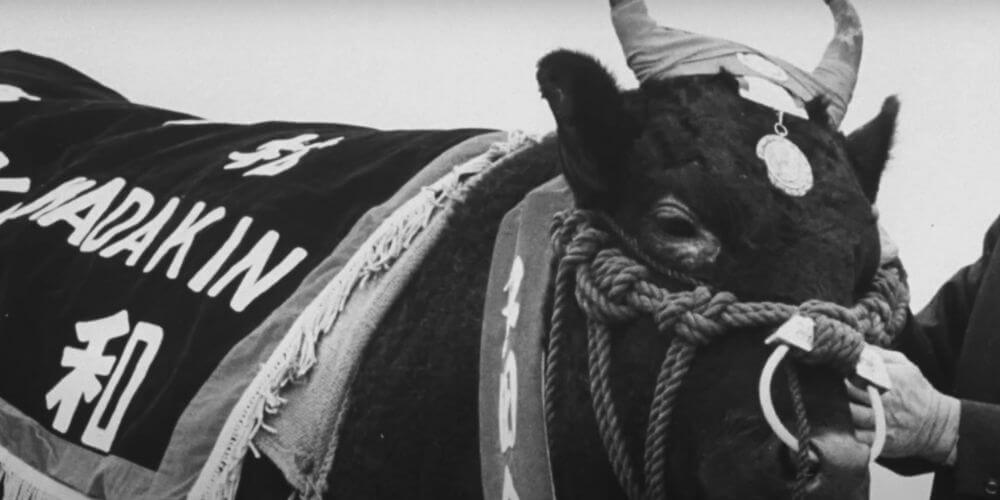
Top-tier Wagyu: Japanese A5 Wagyu
Based on the experience I shared with you at the beginning of this blog, I finally figured out why culinary enthusiasts were raving about Japanese Wagyu! In the realm of Wagyu beef, Japanese A5 Wagyu reigns supreme as the zenith of quality, a culinary treasure that symbolises the highest tier of meat craftsmanship. My personal experience led me into the heart of Japan’s Wagyu culture and unveiled the extraordinary care and tradition behind this exquisite grade, a grade that defines opulence in the culinary world.
What is Japanese A5 Wagyu steak?
As I’ve mentioned earlier, the Japanese A5 Wagyu steak represents the top-tier of steak quality, renowned for its exceptional marbling and flavour. Its A5 grade is the highest grade given to the finest beef in Japan. The “A” indicates a high yield of meat from the carcass, while the “5” in the grading signifies the highest level of marbling—an intricate web of creamy fat interlaced throughout the rich and beautifully ruby-coloured meat.
The A5 grade is only given for the highest quality Wagyu beef. They are not regular cattle and are not produced using typical cattle-raising methods. The A5 Wagyu is a product of multiple Japanese generations of expertise and a true commitment to quality. The result? A remarkable marbling that distinguishes the A5 Wagyu from the rest!
How is Wagyu A5 produced?
During a visit to a renowned Wagyu farm in Japan, I witnessed the meticulous attention to detail that goes into raising A5 Wagyu cattle. The farmers spoke of the deep respect they hold for their herds, following time-honoured practices that include specialised diets and careful rearing. This devotion is palpable in the taste of A5 Wagyu, a reflection of the commitment to excellence that defines Japan’s Wagyu tradition.
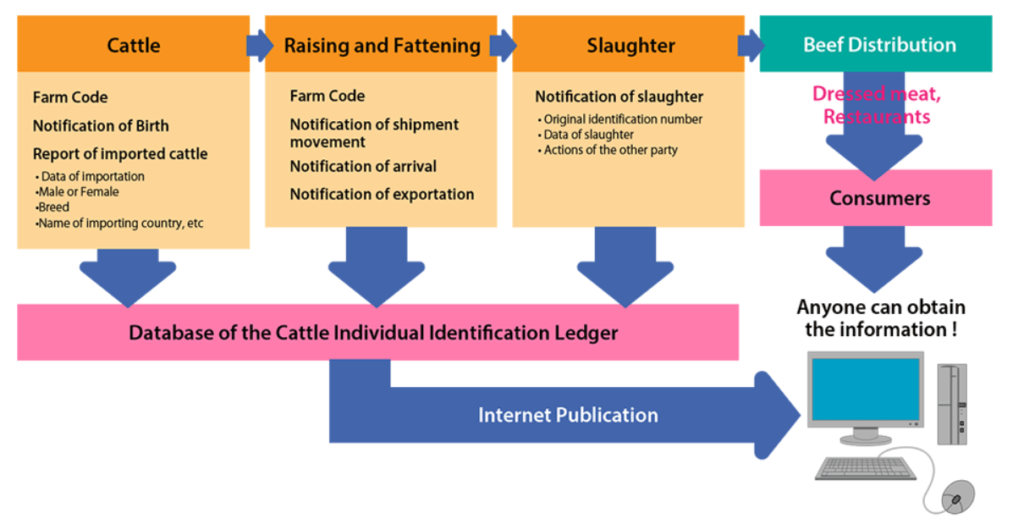
Chart courtesy of the Japan Livestock Export Corporation
What do they feed Wagyu cows?
- Breeding and Rearing: Our visit to the Wagyu farm began with an introduction to the Wagyu cattle, where I learned about the four main breeds and their unique characteristics. Each calf is treated with the utmost respect from birth and registered at the National Livestock Breeding Center with a birth certificate, confirming its pure lineage. Witnessing the bond between the breeders and their cattle offered a profound insight into the foundational step towards achieving A5 Wagyu.
- Feeding Farms: We were off to the feeding farms to see how the cattle were raised and fattened. Wow, I was amazed at how peaceful and natural the environment was that these animals enjoyed. You’ll be shocked to hear that each Wagyu cow is given their name, which just shows the personalised care they receive from birth! The diet, carefully composed of high-energy ingredients like grain, hay, and wheat, is free from any growth enhancers or hormones, highlighting the natural approach to their growth and well-being.
- Stress-Free Environment: The Japanese believe that creating a stress-free environment for cows can help produce higher-quality meat. I could see that the farmers employ practices designed to keep the cattle calm and relaxed (no tensed muscles here!), a crucial factor in ensuring the development of the signature marbling.
- Care and Diet: Here’s where it gets exciting and even more interesting! At the heart of their diet lies a foundation of lush, nutrient-rich grasses, providing essential vitamins and minerals while aiding in the cows’ digestion. But it’s the addition of energy-dense grains that truly sets the stage for their remarkable growth and development. What fascinates me, however, is the inclusion of unique ingredients that one might not typically associate with cattle feed, such as legumes like soybeans, okra, and even beer or sake! The sheer artistry and dedication that goes into their care shows why A5 Wagyu is world-class.
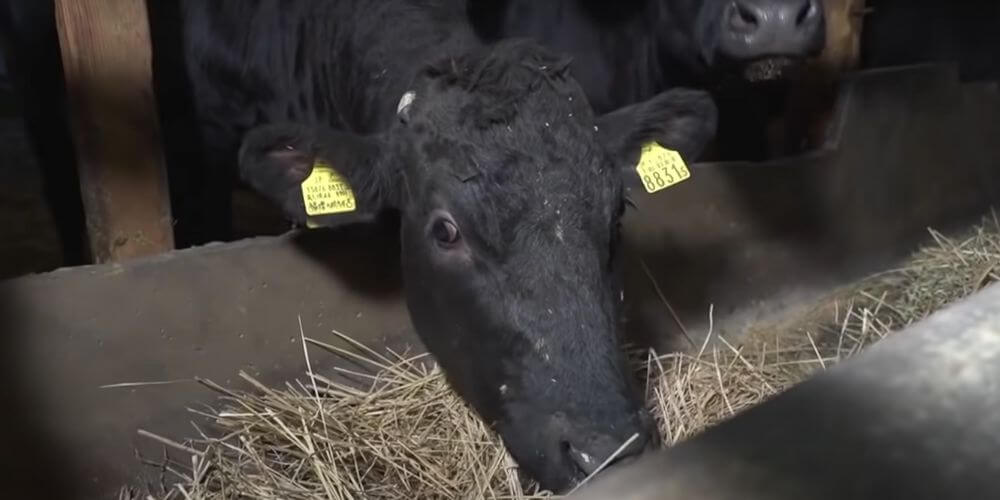
Decoding the Grading System of Japanese Wagyu
How does the Japanese Wagyu rating system work?
The next step of the tour was getting educated on how Japanese Wagyu was graded. In Japan, the beef is graded by an official governing body, the Japan Meat Grading Association, an institution whose seal of approval is as revered as it is hard-earned. I learned that the grading process itself is certified by no less than the Director-General of the Agricultural Production Bureau of the Ministry of Agriculture, Forestry, and Fisheries, a testament to the national significance of upholding the highest standards of Wagyu excellence. Their grading system is a nationwide benchmark, that evaluates each cut of beef through a discerning lens, considering a combination of factors that collectively determine its quality.
Yield Grade (A-C)
The yield grade is a measure of the ratio of usable meat obtained from the carcass and is meticulously assessed, ensuring that only the most bountiful cuts advance to the next stage of evaluation. From what I found out, this is the first indicator of quality. ‘A’ tells us that there is a higher yield of prime cuts from the carcass, while ‘B’ and ‘C’ show a lower yield.
Quality Grade (1-5) of Japanese Wagyu
Although the yield grade is the first indicator of the quality of Wagyu, the quality grade is what separates the exceptional from the ‘good’. There are trained and licensed graders who inspect and scrutinise the marbling of every carcass. The graders consider four factors before deciding on the grade.
- Beef Marbling Score (BMS): Ranging from 1 to 12, this score reflects the amount and quality of intramuscular fat, that exquisite marbling that imparts the beef with its unparalleled flavour and tenderness. For an A5 grade, the BMS must be between 8 and 12.
- Beef Colour Standard (BCS): The ideal colour of Wagyu beef is assessed to ensure it meets consumer expectations for appearance.
- Beef Fat Standard (BFS): Even the colour, quality, and texture of the fat are included in the evaluation as they profoundly affect the taste and quality of the meat.
- Firmness and Texture: The meat must have the right firmness and a fine texture to qualify for the top grade.
When I was observing the graders handle and assess each carcass, I realised that Wagyu steaks undergo a very meticulous process before they reach our plates. It’s not just about raising cows for profit; Wagyu breeding is an art in itself. Marbling, in particular, was a point of immense focus, as it directly influences the flavour profile and tenderness of the beef. A higher marbling score means more of that coveted intramuscular fat, which melts during cooking, basting the meat and imparting a rich, buttery taste. The overall quality score encompasses all of these factors, and when the graders give it a score of 5, you know that it is truly top of the line.
This uncompromising attention to detail sets the A5 grade apart, a mark of distinction that signifies why Wagyu is expensive and highly sought after. Beef that has earned this coveted grade has not only met but exceeded the stringent standards set by the Japanese Meat Grading Association, ensuring that we get a unique culinary experience.
As I left the grading room, I couldn’t help but feel a profound sense of respect for the unwavering pursuit of perfection that underpins the world of Japanese Wagyu. It was a reminder that true quality is not merely a matter of appearance or reputation. Still, it is the culmination of countless nuances and intricacies, each carefully weighed and considered by those who have dedicated their lives to this craft.
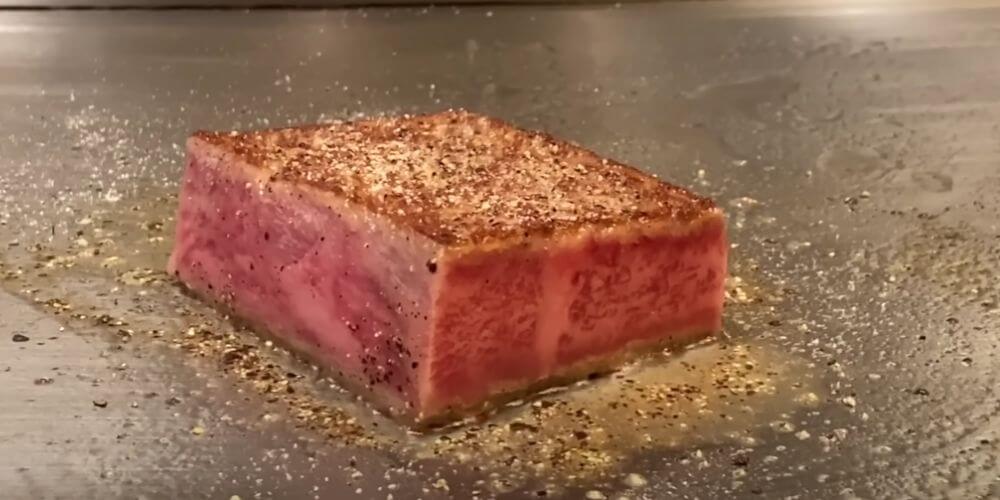
Is Wagyu A5 better than Kobe beef?
One of the perks of running a butcher shop is I get to taste and compare different kinds of meat, like the A5 Wagyu and the Kobe beef. One thing is certain: both kinds are exquisite in their taste and have a hefty price tag! A lot of customers ask me which type of beef I would personally recommend, and I’d always say it always comes down to your personal preferences, budget, and where you’re planning to use it.
An A5 Wagyu steak is top-of-the-line, with marbling like no other and a texture that simply melts the moment it touches your tongue. In my experience, the A5 grade ensures a consistent level of quality that is hard to match, even among the best Kobe beef.
Kobe beef, on the other hand, is renowned for its exclusivity and strict production standards. To be considered genuine Kobe, the beef must come from the Tajima strain of Japanese black cattle, be raised in the Hyogo Prefecture of Japan, and adhere to a stringent set of guidelines. This exclusivity often makes Kobe beef highly sought-after and, in some cases, harder to come by…and when it does, it comes at a steep price!
That said, it’s important to note that while all Kobe beef can be considered A5 grade, not all A5 Wagyu beef is Kobe. Why? It’s because the A5 grading system, which is based on factors such as marbling, colour, firmness, and texture, is a more universal standard that can be applied to various types of Wagyu.
In terms of flavour and texture, I’ve found that Wagyu A5 and Kobe beef can be quite similar, with both offering a rich, buttery, and intensely flavourful experience. At the end of the day, your personal preference and taste matter. Both are undoubtedly exceptional, and the experience of indulging in either one is truly memorable.
How do you tell the difference between real and fake Wagyu?
Because I work in the butcher trade, I know how to distinguish real Wagyu from fake ones. With the growing popularity of Wagyu, it’s become increasingly important for consumers to be able to identify authentic Wagyu to ensure they’re getting the exceptional quality they expect. Here are some tips:
- Appearance: Genuine Wagyu beef has a distinct marbling that looks like thin, intricate white webs running throughout the meat. This gives the beef a uniformly pink colour, unlike the more iron-red hue of most other beef cuts. The level of marbling is truly unparalleled, and it’s this marbling that contributes to the beef’s rich, buttery flavour and melt-in-your-mouth texture.
- Cattle Breeds: True Wagyu originates from four breeds—Kuroge, Akaushi, Shorthorn, and Polled—with Kuroge being the most renowned for its marbling. Knowing these breeds is essential, as real Wagyu is exclusively from these lineages.
- Cattle ID Number: In Japan, Wagyu cattle are meticulously tracked with individual ID numbers. During my visit to a Wagyu farm, I learned that these IDs are linked to detailed records, including the cow’s lineage, birthplace, and rearing history. You can ask your local butcher to let you know the ID number of the cattle to confirm authenticity.
- Certificate of Authenticity: Real Wagyu, especially Kobe beef, comes with a certificate containing details about the beef’s source and grade. For Kobe beef, you should also look for a bronze statue in authorized establishments as a mark of authenticity.
- Grading System: The Japanese Meat Grading Association also applies a rigorous grading system to Wagyu beef, with the A5 grade being the highest and most sought-after. When you’re purchasing Wagyu, look for this grade designation, as it’s a reliable indicator of the beef’s exceptional quality in terms of yield, marbling, colour, and texture.
Is A5 Wagyu better than regular beef?
I’d answer this question ‘Yes’ in a heartbeat every single time! The marbling and intensity of flavour an A5 Wagyu brings to the table and palate are truly exceptional. But, what’s best for me isn’t always everyone’s cup of tea. I’d always recommend our customers try and compare both kinds of beef side by side to see which one fits their taste preferences.
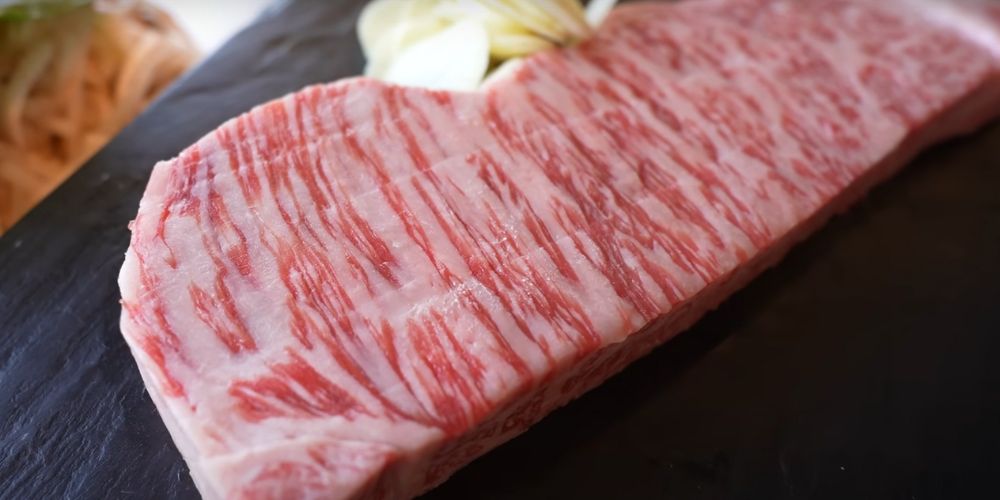
How much does A5 Wagyu cost?
The truth is, this premium cut of meat comes with a premium price tag, but for good reason. I’ve indulged in A5 Wagyu quite a few times from various sources, and the Wagyu prices have ranged quite significantly.
For a basic striploin block, I’ve seen prices hover around the $89 mark. However, when it comes to thick-cut ribeye steaks, the cost can be significantly higher, often reaching up to $199 per steak. And the real showstopper? I’ve come across speciality cuts, like Chateaubriand from A5 Wagyu, that can cost a staggering $200 or more.
Now, you might be taking a step back because of its steep prices. But, if you’ve read earlier on, the answer lies in the exceptional quality and the meticulous care that goes into raising, grading, and exporting Wagyu cattle. It’s this level of attention to detail that makes A5 Wagyu so sought-after and, consequently, so expensive.
Is Australian Wagyu better than Japanese Wagyu?
In my experience serving Wagyu at The Meat Inn Place, I’ve seen customers’ preferences vary. Some gravitate towards the richer, more intense flavour of Japanese A5 Wagyu, while others prefer the subtler, tender profile of Australian Wagyu.
Each type of Wagyu offers a unique experience, and the best choice depends on personal preference and the dining occasion. Whether you seek the unparalleled marbling and luxurious taste of Japanese A5 Wagyu or the leaner, milder Australian Wagyu, both guarantee a high-quality, sumptuous meal.
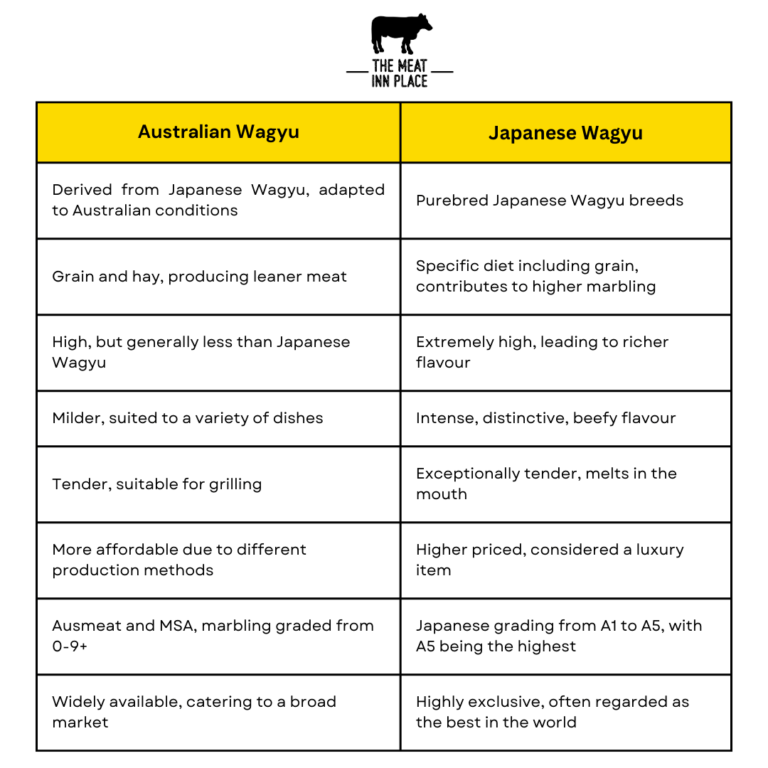
Is there such a thing as A8 Wagyu?
I can say with certainty that there is no such thing as A8 Wagyu. The Japanese grading system for this premium beef has a clearly defined scale that tops out at the highly sought-after A5 grade. The Beef Marbling Score (BMS) used to assess Wagyu ranges from 3 to 12, with 12 being the highest quality of marbling. The BMS, combined with the yield score, will result in the final grade. And at the very top of this scale is the revered A5 Wagyu.
Why Wagyu A5 Is the Absolute Best Steak Your Money Can Buy
Wagyu A5 is the epitome of steak perfection, offering unparalleled marbling and taste that justify its status as the finest steak money can buy. The rigorous Japanese grading standards ensure that A5 Wagyu delivers a melt-in-the-mouth texture and a rich, beefy flavour that’s simply unmatched. Every authentic A5 steak is a product of meticulous care from farm to table, reflecting a heritage of culinary excellence. For those in Melbourne seeking this exquisite dining experience, we at The Meat Inn Place stand as a trusted purveyor of quality A5 Wagyu steaks, Australian Wagyu, and more, where authenticity and culinary craftsmanship promise a memorable feast for you and your loved ones.

